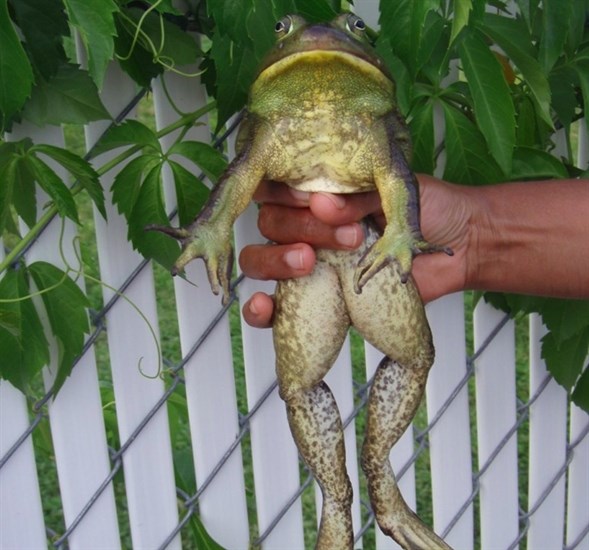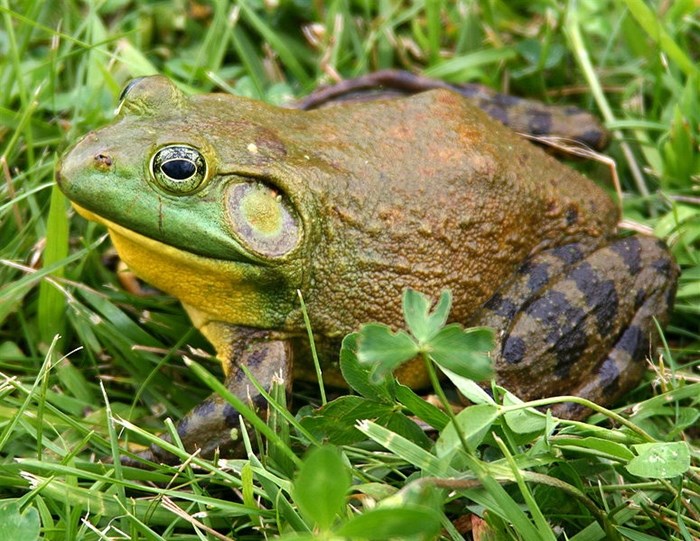
The American Bullfrog is not native to B.C. and there is concern it will outcompete, or eat, native species.
Image Credit: Invasive Species Council of British Columbia
September 08, 2016 - 8:30 AM
SHUSWAP - A conservation group is asking people to keep their eyes and ears open for signs of a large, loud and invasive amphibian.
The American Bullfrog, which can weigh up to 800 grams, is an aggressive, voracious predator that eats fish, rodents, snakes, turtles, songbirds and even ducklings, according to a release from the Columbia Shuswap Invasive Species Society.
And the invasive frogs are reportedly spreading rapidly across B.C. Emily Spiler, with the society, says the frogs are native to eastern North America but were introduced to B.C. in the 1930s when bullfrog farms were created in an attempt to market frog legs. The released stocks from these farms are believed to be the source of the bullfrog population in B.C., she says. Bullfrogs were also imported for use in aquatic gardens and the pet trade, later being released from their ponds or aquariums into wetland habitats.
The frogs are currently found on Vancouver Island, the Lower Mainland and recently in the South Okanagan and Central Kootenay border region. Bullfrog populations have been observed in Creston and are reportedly moving north, Spiler says. There are no known colonies in the Columbia-Shuswap region, and the society is hoping to keep it that way.
“The size and strength of the American Bullfrog makes them great competitors, often defending their territory and taking food and habitat away from native amphibians,” Spiler says.
Native frogs that could be impacted include the Western Toad, Pacific Chorus Frog, Columbia Spotted Frog, the endangered Great Basin Spadefoot in the South Okanagan and the endangered Northern Leopard Frog.
Characteristics of the American Bullfrog include smooth skin without warts, yellow throats on males, and large circular eardrums or tympanum behind the eye.
“They have a distinct, loud, low-pitch call,” Spiler says.
If you see or hear a new bullfrog colony, you can report your observations to the Columbia Shuswap Invasive Species Society. You can also help by not moving frogs or their tadpoles. It is illegal under the Wildlife act to capture, transport, keep or sell wild animals including Bullfrogs. If you have an aquarium or other pets, “Don’t Let It Loose” and avoid releasing them into the wild.

American Bullfrog
Image Credit: Invasive Species Council of British Columbia
To contact a reporter for this story, email Charlotte Helston or call 250-309-5230 or email the editor. You can also submit photos, videos or news tips to the newsroom and be entered to win a monthly prize draw.
We welcome your comments and opinions on our stories but play nice. We won't censor or delete comments unless they contain off-topic statements or links, unnecessary vulgarity, false facts, spam or obviously fake profiles. If you have any concerns about what you see in comments, email the editor in the link above.
News from © iNFOnews, 2016